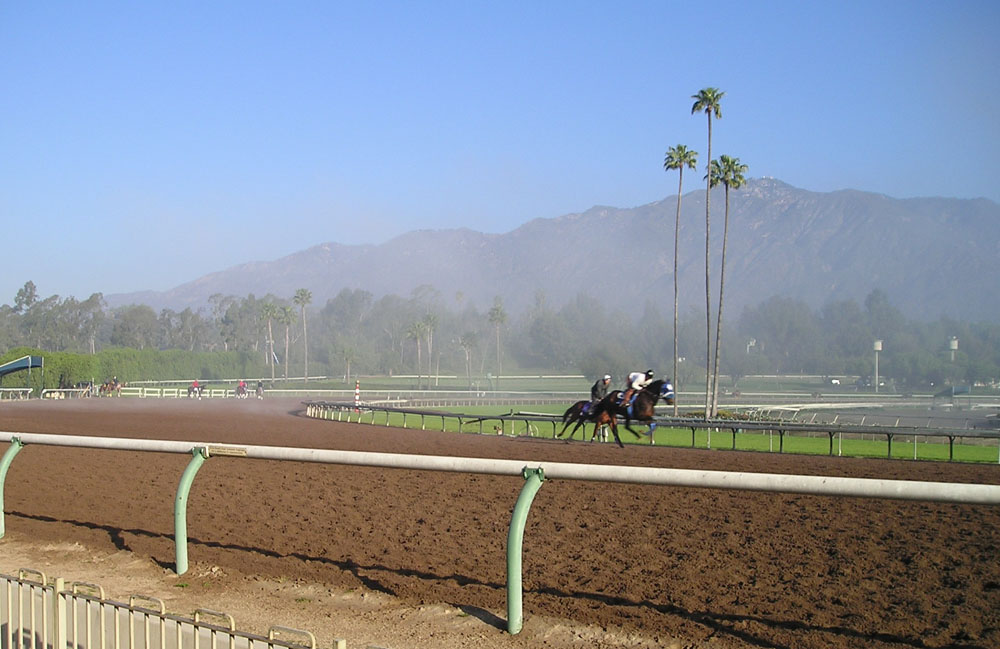include(“CBB/includes/base_url.php”); ?>
Betting to Win
| Betting to Win by Kenneth Strong of Ultimatecapper.com Many experts consider playing a horse to win to be the best bet in racing. If you bet on horse to win, your horse must finish first. The reasoning behind the value of win betting stems from the fact that you can see approximately what your horse will pay to win by looking at the tote board before the race runs. This allows you to decide whether the win payoff represents good value based on what you think the horses chances winning are. CLICKHERE TO BET ON HORSES AND PLAY POKER USING THE SAME ACCOUNT! If you think a horse has a 2-1 chance of winning (approximately $6 for a $2 bet, as displayed on the tote board) and the tote board says the horse is paying off at 5-1 ($12), this represents a good value play. This also works in reverse. If you think a horse should be 10-1 ($22), and the tote board says the horse will pay off at only 3-1 ($8), this would represent a poor value proposition. Before the advent of simulcasting (the process of a racetrack allowing other tracks across the country to watch and bet on its races) the win price on the tote board was accurate to within a few cents. However, with simulcasting now in full force, the money bet at other tracks is sometimes transferred into the host tracks wagering pools during or shortly after the running of the actual race. This can cause the odds to change on the tote board even after the race has run. In general however, the odds displayed on the tote board just before the race runs, will give you a good idea of the expected payoff. The key to win betting is finding a horse you like, whose odds on the tote board are better than what you think their chances of winning are. If you think a horse has a good chance to win and should be about 2-1 ($6) and the tote board says the horse will pay off at 8-1 ($18), this represents good value and is probably a good bet to win. Betting to Place and Show If you bet on a horse to place, your horse must finish first or second. If you bet on a horse to show, your horse must finish first, second or third. Betting to place or show offers you a better chance to cash more tickets, but the payoffs are lower. The reason that the payoffs are lower to place and show, is that the pool of money must be divided among more bettors. In the case of betting to place, payoffs are made to both the group who bet the winner of the race to place, and to those who bet the actual second place finisher to place. In the case of show wagers, the payoffs must be divided even further, among three groups of bettors those who bet the winner to show, those who bet the second place finisher to show, and those who bet the third place finisher to show. Knowing that the payoffs for place and show are lower, handicappers who bet horses to finish in these positions generally try to overcome the lower payoffs by picking a higher percentage of winners. IMPORTANT NOTE: NEVER throw away your tickets until a race is declared official. On occasion there will be a jockey claim of foul or a STEWARDS INQUIRY into the running of a race. If a horse is disqualified, your horse could be moved up into a winning position, depending on what type of bet you made and where your horse actually finished. For example, if the horse you bet on to win finishes second during the actual running of the race, but the winner is disqualified, your horse could be moved into the win position, making your ticket a winner. Important Betting Percentages Public favorites (the horses with the most money bet on them to win a race at post time) win approximately 33 percent of the time. It requires no handicapping skill at all to bet strictly on the public favorites, but this strategy has been proven to produce a loss of between 9-15 percent overall. Betting on all public favorites to place produces a loss of about five percent. Expert handicappers who choose to play only public favorites try to improve their chances of showing a profit by betting only on the favorites they think have a good chance of winning. The public favorite at post time may not always be the horse with the best chance of winning, and superior handicapping skills can help you separate legitimate favorites from false favorites. For example, while the public might make a horse the 2-1 favorite in a race, an expert handicapper might rate the same horses chances of winning at 5-1, and thus would pass on betting the horse. To make a profit of 20 percent betting favorites, a sharp handicapper must cash: 50 percent of their bets at odds of not lower than 7-5 To make a profit of 40 percent betting favorites, a sharp handicapper must cash: 50 percent of their bets at average odds of 9-5 Be sure to check out part IV of this V part article: What is Paramutual Betting? |




